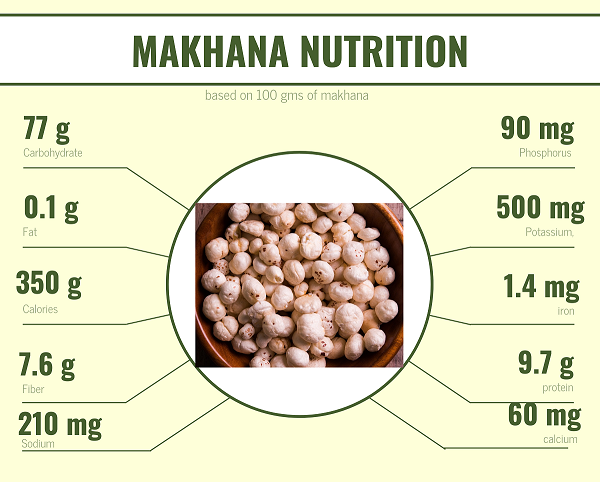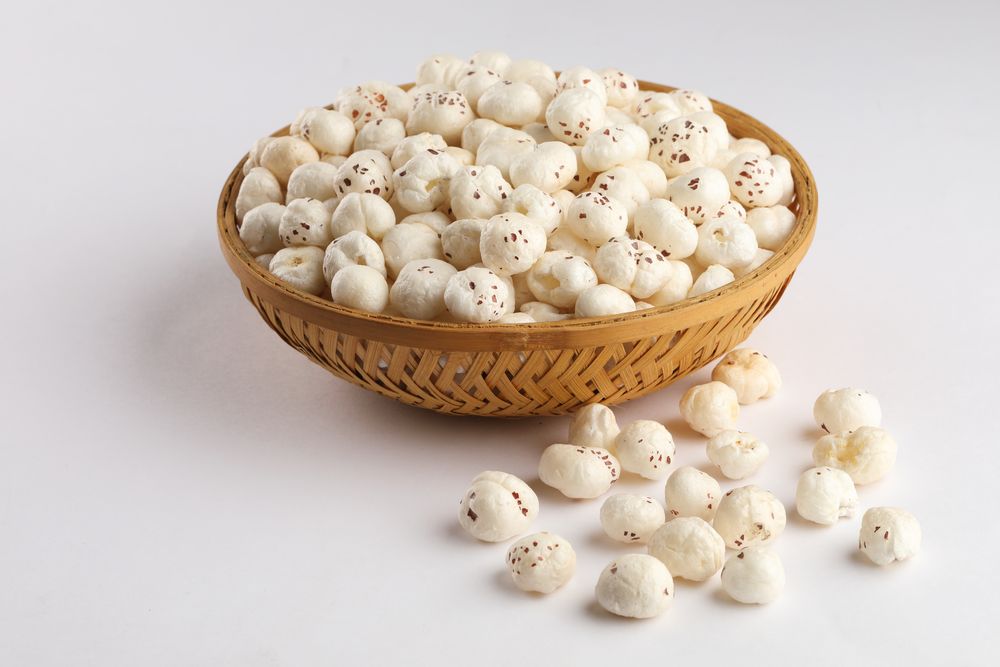Makhana - Tap the Untapped Market
- What is Makhana (Fox Nuts)?
Ours only favorite “Makhana” - the term is also known as “lotus seeds” or “foxnuts” or gorgon seeds or “Phool makhana”. They are often used in a few Indian recipes as sweets, raita, or Makhana curry. Also, one of the most delightful moments is the most delicious snacks during the evening time along with a cup of tea!
Where does Makhana produce most in India?
Makhanas are produced mostly in various parts of India including Bihar, Madhya Pradesh, Rajasthan, Tripura, and Manipur. Bihar is considered a leading producer of Makhanas accounting for more than 85% of the total production of India.
Where does Makhana produce most in India?
Makhanas are produced mostly in various parts of India including Bihar, Madhya Pradesh, Rajasthan, Tripura, and Manipur. Bihar is considered a leading producer of Makhanas accounting for more than 85% of the total production of India.
- Driving Factors for Makhana:
- Increasing demand for healthy food from an increasingly health-conscious consumer base.
- A portion of great snack food for diabetics and heart patients as they contain good fat and have a low quantity of saturated fats.
- The growing popularity of the snack food category (ready-to-eat packed foods)
- Rising demand for Gluten Free Protein Foods
- Rising Use in the Cosmetic Products.

- MAKHANA – GLOBAL PROSPECTS AND OPPORTUNITIES
- During the latest period of 2019-21, the Compound Annual Growth Rate (CAGR) of the makhana is almost 7% up.
- The global makhana size will grow by USD 72.5 million. Makhana is popular in countries like India, Japan, the US, Australia Thailand, and China.
- The potential market in US & UK is still unexplored. It is also bringing new opportunities for the new players to come and tap the untapped market.
- The demand for fox nuts is increasing as it is a great substitute for popcorns in the coming years. In terms, it is tastier and has healthier values.
- Makhana Sector – Indian Market Analysis
- The total area under Makhana cultivation in India is estimated to be 15000 Ha. It yields 1,20,000 MT of makhana seeds, which after processing yields 40,000 MT of makhana.
- The estimated value of the production at the farmers' end is Rs 250 Crore and it generates revenue of Rs 550 Crore at the traders’ level.
- In India, its cultivation is limited to a few states like Bihar, Assam, Manipur, West Bengal, Tripura, and Odisha
- The two leading players launched their superfast Makhanawala’s and Too yum brand on makhana. It got fired in the market as the most popular bomb to grab first. The unique flavors flooded the market with uniqueness.
- USA, UK, Australia, Bangladesh, Pakistan, and Gulf Nations like U.A.E, Qatar, Saudi Arabia, Kuwait, Oman are the major export destinations of makhana from India
- Despite being a healthy food with a rich amount of nutrients and minerals, makhana export is only 1-2 % of its total quantity. Every year nearly 100-150 tonnes of popped makhana are exported to other countries.
- Value and Figures (Year: 2019-21):
Total Value & Volume of Exports in India:
Total Value: $1,388,394; Total Quantity: 292,822 Kgs
Average Price of Makhana:
Average price per unit: $4.74; Average value per shipment: $1,126
Top Suppliers of Makhana
- United States: $751,132
- United Kingdom: $171,480
- Canada: $120,861
Top Ports of Discharge
- Mundra: $545,155
- Nhava Sheva Sea: $475,398
- Sabarmati: ICD $110,582

- Strategies for Export Promotion of Makhana
- Despite having high potential, the quantity of popped makhana exported outside the country is very small as compared to many other dry fruits.
- Following strategies can be adopted for the promotion of the export of makhana in the Country:
- Expansion of Area under Makhana:
There is a large scope for expansion of the makhana area in the country. Currently, it is grown in about 15000 ha area of which Bihar is the major contributor. Being an aquatic crop, makhana requires ponds, chairs, and low-lying fields with standing water during the crop season. Bihar Govt. is extending subsidy for makhana cultivation to the extent of Rs. 13400 to 16000 per ha.
2. Adoption of high yielding varieties:
For increasing productivity, the adoption of high-yielding varieties and new technologies by farmers is required. The availability of quality seeds of these varieties needs to be ensured. So that farmers can purchase these improved varieties in large quantities for wider adoption. Training on a scientific package of practices for makhana for farmers needs to be promoted at a massive scale.
3. Mechanization for harvesting and processing:
Export of any product depends on its quality. Presently, the majority of Makhana is harvested and processed manually by skilled laborers. There is the problem of maintaining hygiene during the preparation of popped Makhana. Therefore, low-cost types of machinery need to be developed and make available for the processing of Makhana seed.
Export of any product depends on its quality. Presently, the majority of Makhana is harvested and processed manually by skilled laborers. There is the problem of maintaining hygiene during the preparation of popped Makhana. Therefore, low-cost types of machinery need to be developed and make available for the processing of Makhana seed.
4. Allocation of separate HS code and Specification of product for export:
Being a minor crop, the Government has not developed quality specifications for its export. Therefore, specifications must be developed for its product. Moreover, makhana still has no separate HS code and it falls in HS Code 19041090 which includes other products also. To promote its export, a separate HS code should be allocated.
Being a minor crop, the Government has not developed quality specifications for its export. Therefore, specifications must be developed for its product. Moreover, makhana still has no separate HS code and it falls in HS Code 19041090 which includes other products also. To promote its export, a separate HS code should be allocated.
5. Promoting export through branding:
Scope for makhana export can be enhanced by the branding of value-added products. Some makhana companies add value to the raw popped makhana in the form of tomato, pudina, chili, butter, or other flavors. These fried value-added snacks are packed in small attractive packs of 50 g, 100 g, or 250g and sold to consumers through retail outlets of large companies like Reliance, Haldiram, etc. The products are also sold online through Amazon, Flipkart, Big Basket, Grofers, etc. to the consumers.
Scope for makhana export can be enhanced by the branding of value-added products. Some makhana companies add value to the raw popped makhana in the form of tomato, pudina, chili, butter, or other flavors. These fried value-added snacks are packed in small attractive packs of 50 g, 100 g, or 250g and sold to consumers through retail outlets of large companies like Reliance, Haldiram, etc. The products are also sold online through Amazon, Flipkart, Big Basket, Grofers, etc. to the consumers.
- Conclusion:
To enhance profitability from makhana cultivation, its consumption and export must be promoted. The government must help the willing makhana farmers in exporting their produce by the formation of the Farmer Producer Company. This will not only earn the country handsome foreign exchange but also improve the socio-economic condition of resource-poor farmers involved in its cultivation.





